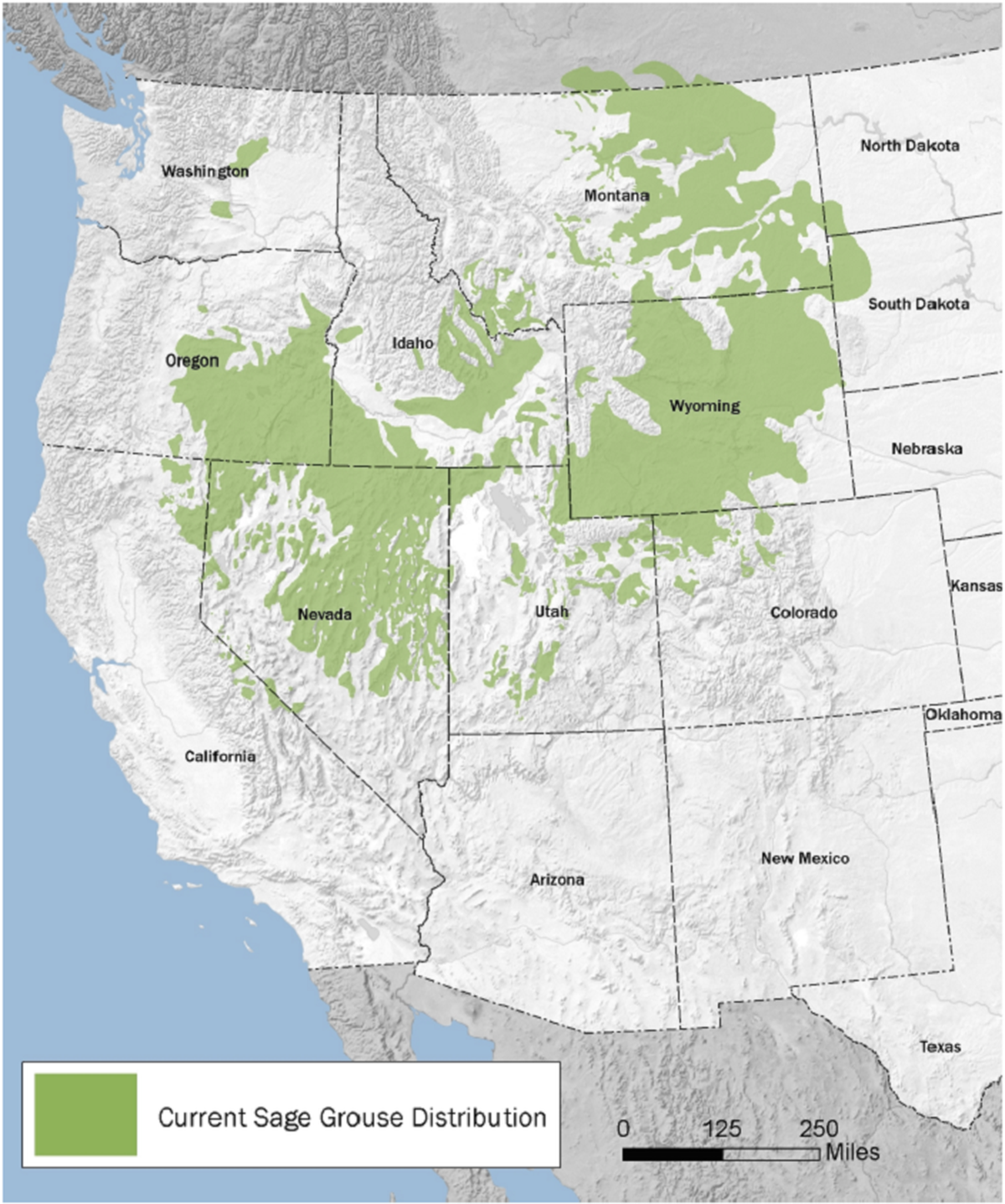Sage grouse rules would affect 10 states
Restrictions on oil drilling, power line location to tighten

CHEYENNE, Wyo. – Interior Secretary Sally Jewell revealed plans Thursday to preserve habitat in 10 Western states for an imperiled ground-dwelling bird, the federal government’s biggest land-planning effort to date for conservation of a single species.
The proposal would affect energy development. The regulations would require oil and gas wells to be clustered in groups of a half-dozen or more to avoid scattering them across habitat of the greater sage grouse. Drilling near breeding areas would be prohibited during mating season, and power lines would be moved away from prime habitat to avoid serving as perches for raptors that eat sage grouse.
Some will say the plans don’t go far enough to protect the bird, Jewell said.
“But I would say these plans are grounded in sound science – the best available science,” she said at a news conference on a ranch near Cheyenne.
Sage grouse are chicken-size birds that inhabit grass and sagebrush ecosystems in 11 states from California to the Dakotas. The rules would not apply to a relatively small area of habitat in Washington state. The bird’s numbers have declined sharply in recent decades, and some environmentalists warn they are at risk of extinction.
The U.S. Fish and Wildlife Service faces a court-ordered deadline of Sept. 30 to decide whether the greater sage grouse needs protection as a threatened or endangered species. Many Western lawmakers and representatives of the oil-and-gas and agriculture industries say a threatened or endangered listing would devastate the region’s economy.
Congress voted late last year to withhold funding to implement any listing until September 2016. Other measures pending before U.S. lawmakers aim to postpone any federal listing for five years or more as states develop their own plans for conserving habitat.
Republicans in Congress criticized the plans as federal overreach.
“This is just flat out wrong,” said U.S. Rep. Rob Bishop of Utah, chairman of the House Natural Resources Committee. “The state plans work. This proposal is only about controlling land, not saving the bird.”
But Wyoming shows that sage grouse and energy development can coexist, Jewell said. It is a top oil, natural gas and coal producer with a sage grouse conservation strategy being copied by other states and the federal government.
“There is no future for our economy if we don’t take care of the sage grouse,” said Wyoming Gov. Matt Mead, a Republican who took part in the announcement. “That’s a fact. Some like it, some don’t.”
Several environmental groups welcomed the plans.
In what some environmentalists view as an accommodation to industry, the rules would not seek to block development across sage grouse habitat. The government still intends to honor valid and existing rights to develop resources on that land, the Interior Department said.
The U.S. Bureau of Land Management expects to adopt the new measures by late summer. They would apply to federal lands in California, Colorado, Idaho, Montana, Nevada, North Dakota, Oregon, South Dakota, Utah and Wyoming.